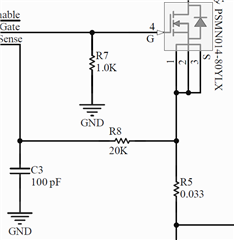We're doing a low-voltage/relatively high current design using the DRV110 part. For some reason, the hold current is over 6amps, rather than the calculated 1.5A expected. Could it have something to do with the values of C3 and R8? If so, how should those values be calculated?
Here's the schematic:

...and a close up of R5 & R8, in case it's not clear:

Any help is very much appreciated!
Thanks,
Calvin


